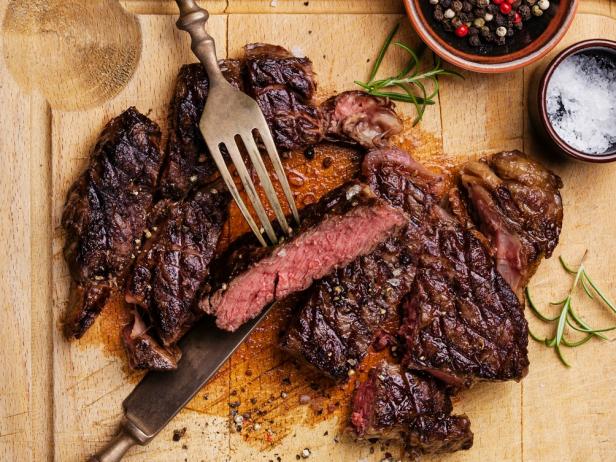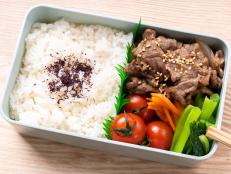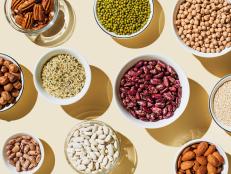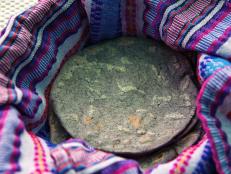Are You Eating Too Much Protein?
More isn't always better. Find out how much protein you really need to consume each day.

Lisovskaya/iStock
With the popularity of high-protein diets like Atkins and paleo, you may be wondering if everyone needs more protein. But as with most things, more isn't always better.
The power of protein
Protein forms the building blocks of our bodies. This important macronutrient builds, maintains and repairs all body tissues; its jobs include building bone, repairing the GI tract after digesting each meal, healing wounds, and maintaining muscle.
Amino acids make up proteins. Proteins are combinations of amino acids sequenced together in a specific way. There are 20 amino acids: 11 nonessential ones that our bodies can produce and nine essential amino acids that can't be made and must come from our food. Most "complete" proteins — meaning they contain all nine essential amino acids — are animal-based. These include fish, chicken, turkey, lamb, beef, pork, eggs and dairy foods.
There are a few plant foods that contain all nine amino acids. They include soy foods, buckwheat, quinoa, chia seeds, hemp seeds and seitan.
How much protein is good?
The Recommended Dietary Allowance (RDA) for protein — the amount needed to prevent deficiency — is 0.8 gram per kilogram of body weight per day for adults. For a 150-pound woman, this is about 55 grams of protein. To figure out your minimum needs, multiply your weight in pounds by 0.36 or use this protein calculator. However, these lower levels, which are enough to prevent diseases caused by deficiency, may not be optimal levels for everyone. Amounts of protein higher than the RDA may be helpful for people who:
- Are over 30 — After this age, we lose about 3 to 8% of our muscle mass with every decade.
- Exercise hard-core — This includes exercisers who do cardio and weight training daily, but probably not those who jog a few times a week.
- Have serious weight-loss goals — Researchers have found that increased protein plus regular intense exercise can stimulate the loss of more fat, with less muscle loss.
The Institute of Medicine has set the range of recommended protein intake at 10 to 35% of total calories for adults, or 50 to 175 grams of protein per day for a 2,000-calorie diet. That's a wide range, but on average most Americans get about 16% of their daily calories from protein, which includes protein from all food groups.
How much is bad?
High-protein diets like Atkins and paleo have been shown to be effective for weight loss and even weight maintenance. For an 1,800-calorie daily diet, paleo plans generally suggest about 95 to 175 grams of protein, while Atkins plans suggest about 110 to 155 grams.
However, in order to keep carb counts low and meet their protein goals, followers of these diets often eat mostly meat and avoid grains, beans, lentils and other healthful carbohydrate-containing foods. This can increase the production in the gut of a substance called TMAO, which is associated with heart disease risk. In a recent study, researchers found that paleo dieters had increased levels of TMAO. These researchers also point out that a more well-rounded diet that includes whole grains, potatoes and other fiber-rich foods may be necessary for gut health and heart health.
What to do?
Stick to the recommended amounts of protein, because any extra protein that your body doesn't need will get stored as fat, the same as with extra carbs or dietary fat. Some people — like those who regularly exercise intensely or who are over 40 — would probably benefit from eating on the higher end of the protein recommendations. That's about 1 to 1.2 grams per kilogram of body weight, which comes to about 68 to 82 grams for a 150-pound woman.
It's best to spread your protein consumption out throughout the day. If your goal is higher protein intake, aim for at least 25 grams of protein at each meal, including breakfast and lunch.
Serena Ball, MS, RD is a registered dietitian nutritionist, food writer, and recipe developer. She blogs at TeaspoonOfSpice.com and is the author of the best-selling The 30-Minute Mediterranean Diet Cookbook. Follow her @TspCurry on Twitter and Instagram.
Related Stories:





























































